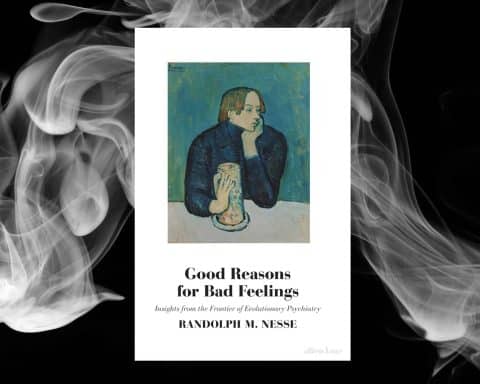
The world that you see every day when you wake up and open your eyes is not real. What you experience when you look out of the window and finish your cup of tea, when you travel to work and when you call your first patient is a simulation, extrapolated from limited sensory data and based on a model in your head which you have spent your whole life developing. The reason we don’t realize this is that it’s a very good simulation, and it’s all we have.1,2
If that seems strange, consider what happens when you are dreaming or lost in a book, remembering your last holiday or planning the next one: you see, hear and feel things that are not happening, often with an undeniable sense of reality. Is it such a leap to imagine that our day-to-day experiences arises in a similar way?
We can look at a degraded image of something familiar and see only black and white splodges, but once we know what we are looking at, we cannot unsee what they represent.3 Patterns of light and shade falling on our retina are the starting point, but our perception is driven by the mental constructs we associate with these patterns, by recognition. The image encodes the experience, as do words on a page, but the two are not the same. We look at the world, but we see what our brain tells us to see.
When someone asks you whether you’re telling them it’s all in their head, the most accurate answer is: Yes, but isn’t everything?
Think about how easy it is to recognize faces in inanimate objects: we understand that things are not people, but sometimes we can’t help reacting momentarily as if they were.4 We project the construct smile onto the barest suggestion of a sagging horizontal line with two dots above it, in the same way that a social media filter projects a stylized construct of a face onto the outline it recognizes in our photo.
This also applies to our awareness of our own body and mind: there is a sensory substrate which informs what we feel, but does not determine it. We are sensitive to the concentration of glucose in our bloodstream, but we never actually feel it directly, in the same way that we don’t feel excitement or fear when our vehicle accelerates into a steep drop: instead, our brains project these feelings onto ambiguous signals from our bodies, based on contextual factors like cues suggesting lunchtime, and whether we’re on a rollercoaster or an icy road in the fog.5 At other times, we feel nothing at all: the grandfather clock in the hall is still ticking but we stopped hearing it some time ago.
What all of this comes down to is that we have no way of experiencing reality directly; we only see, hear and feel our interpretation of that reality, without ever realizing that there is a difference.
My father wrote that “Reality is ungraspable. For convenience we use a limited-reality consensus in which work can be done, transport arranged and essential services provided. The real reality is something else.”6 As doctors, we tend to recognise this in special cases like phantom limb pain and hallucinations, but most of the time we behave as if the reality and the limited-reality consensus, our mental model, were the same thing: symptoms are either due to disease, or the patient is imagining them or making them up. When someone asks you whether you’re telling them it’s all in their head, the most accurate answer is: Yes, but isn’t everything?
A large part of our work as General Practitioners consists of managing the space between the model and the reality, the gap behind the sofa cushions of the world in which we find not loose change and biscuit crumbs, but unexplained suffering, and hurt that seems to have no concrete origin but is inescapably real.
Subtleties aside, some patients have diseases which we must identify and treat, and this depends on recognising the significance of what they tell us.
When patients describe their symptoms in vivid terms, it’s not just to brighten our day: they are simply putting into words their experience. Someone having a heart attack actually feels the elephant sitting on their chest. The person with peripheral neuropathy doesn’t feel a burning pain, they feel their legs burning. In these examples, there is an obvious incongruity between what someone feels and what they can see: there is no elephant, and the legs are not on fire. At other times, though, patients have no way of checking their senses: if you feel as though something terrible is happening inside your pelvis, how do you know that it isn’t? When patients report sensations for which there appears to be no clear pathological cause, it is because their brain is simulating a reality that makes sense of incoming information from their body, based on the model in their head. In this respect, what they feel is qualitatively no different from any other sensation, regardless of whether there is a distinct physical cause or not. When a patient insists that they know their body, they are telling the truth, even though that truth may be more subtle than they realize.
As doctors, we are already used to helping patients interpret their symptoms. Subtleties aside, some patients have diseases which we must identify and treat, and this depends on recognising the significance of what they tell us. This applies not just in cases of serious disease, however, but also in those where it becomes apparent that there is no disease. In both scenarios, our job includes agreeing an explanation that makes sense to the patient, helping them to recalibrate their mental model and simulate more accurately what is happening to them. But ask yourself: would you let someone inside your head with a screwdriver to do this if you didn’t trust them? If we want to be effective as doctors, we need to think less about engaging our patients, and show them rather that they have successfully engaged us, that we have not just heard their symptoms, but felt the weight of them ourselves and responded properly with genuine warmth or even just a thoughtful silence,7 and we must find a way of explaining their experience in terms that make sense to them, that makes what we say real.8 If we can do this, we will help our patients not just to understand their symptoms differently, but potentially to experience them differently and to start to feel better.
References
- Van den Bergh O, Witthӧft M, Petersen S, Brown RJ. Symptoms and the body: taking the inferential leap. Neurosci Biobehav Rev 2017;74:185-203
- Henningsen P et al on behalf of the EURONET-SOMA group, Persistent Physical Symptoms as Perceptual Dysregulation: A Neuropsychobehavioural Model and Its Clinical Implications, Psychosomatic Medicine 2018 V 80, 422-431
- See Example of a two-tone (aka ‘Mooney’) image. On first viewing, this… | Download Scientific Diagram (researchgate.net) (accessed 24/1/23)
- For example: 26 Faces in Everyday Objects | Bored Panda accessed 24/1/23)
- How Emotions are Made: the Secret Life of the Brain, Lisa Feldman Barrett, Pan 2017
- The Moment Under the Moment, Russell Hoban, Jonathan Cape, 1992
- Enck, Bingel, Schedlowski & Rief, The placebo response in medicine: minimize, maximize or personalize? Nature reviews: drug discovery 2013; 12: 191-204
- Christopher F Dowrick, Adele Ring, Gerry M Humphris and Peter Salmon, Normalisation of unexplained symptoms by general practitioners: a functional typology, British Journal of General Practice, 2004, 54, 165-170








